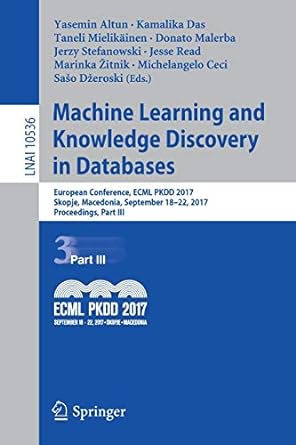Question
In this file there are 4 function stubs for which you must write the code. Note: In each case the function is to return the
In this file there are 4 function stubs for which you must write the code. Note: In each case the function is to return the result -- do not confuse this with printing the result.
vowel_count
This function takes a word and returns the number of vowels in the word (including y).
syllable_count
This function takes a word and returns the number of syllables in the word. For this exercise, assume that syllables are determined as follows: Each sequence of vowels a e i o u y, except for the last e in a word, is a vowel. However, if that algorithm yields a count of 0, change it to 1. For example,
| Word | Syllables |
|---|---|
| Harry | 2 |
| hairy | 2 |
| hare | 1 |
| the | 1 |
filter_dict
This function takes the name of a dictionary file that contains 1 word per line, and the minimum and maximum word lengths. Your function will return a list of the words from the original dictionary file whose length is within the user-specified bounds. So for instance, if the min is 3 and max is 7, then only words with length >= 3 and length <= 7 will be returned in the list.
gematria
Once each letter is assigned a value you can compute the value of a word or phrase by simply summing the values of each letter in the word/phrase. Using a mapping of a=1, b=2, c=3, ..., z=26, "Phil" has a value of P=16 + h=8 + i=9 + l=12 == 45. This function that takes a word and the name of a dictionary file, and then returns a list of all the entries from the dictionary that gematrically match the given word. Note that the case of a letter does not change its value.
The template code is below:
def vowel_count(word): """ Returns the number of vowels in a word (including y). :param word: the word to search for vowels >>> vowel_count('Harry') 2 >>> vowel_count('HAIRY') 3 """ # replace pass below with your code pass def syllable_count(word): """ Returns the number of syllables in the word. For this exercise, assume that syllables are determined as follows: Each sequence of vowels a e i o u y, except for the last e in a word, is a vowel. However, if that algorithm yields a count of 0, change it to 1. :param word: the word whose syllables are being counted. >>> syllable_count('Harry') 2 >>> syllable_count('HAIRY') 2 >>> syllable_count('hare') 1 >>> syllable_count('the') 1 """ # replace pass below with your code pass def filter_dict(filename, min, max): """ From the specified dictionary file containing 1 word per line, return a list of words whose lengths are within the user-specified bounds. So for instance, if the min is 3 and max is 7, then only words with length >= 3 and length <= 7 will be returned in the list. :param filename: the dictionary file containing 1 word per line :param min: the min length (inclusive) of words to return :param max: the max length (inclusive) of words to return >>> filter_dict('small_dict.txt', 3, 5) ['acted', 'bios', 'coder', 'find', 'gore', 'knife', 'racer'] >>> filter_dict('small_dict.txt', 7, 10) ['debased', 'shameful'] """ # replace pass below with your code pass def gematria(word_to_match, filename): """ Takes a word and the name of a dictionary file, and then returns (a list of) all the entries from the dictionary that Gematrically match the given word. "Gematria is the act of assigning numeric values to letters in an alphabet" -- (https://en.wikipedia.org/wiki/Gematria, last access 10/7/2017). Once each letter is assigned a value you can compute the value of a word or phrase by simply summing the values of each letter in the word/phrase. Using a mapping of a=1, b=2, c=3, ..., z=26, "Phil" has a value of P=16 + h=8 + i=9 + l=12 == 45. Note that the case of a letter does not change its value. :param word_to_match: the word for which you are trying to find a Gematric match :param filename: the dictionary file containing other candidate words >>> gematria('Phil', 'small_dict.txt') ['bios', 'coder', 'gore', 'knife', 'racer'] """ # replace pass below with your code pass Step by Step Solution
There are 3 Steps involved in it
Step: 1

Get Instant Access to Expert-Tailored Solutions
See step-by-step solutions with expert insights and AI powered tools for academic success
Step: 2

Step: 3

Ace Your Homework with AI
Get the answers you need in no time with our AI-driven, step-by-step assistance
Get Started


